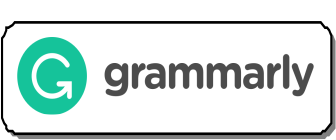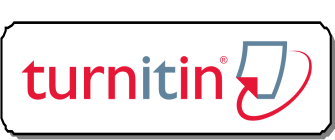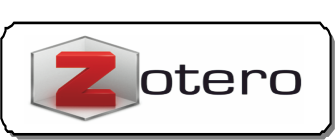Plagiarism in Islamic Education, Online Learning and Student Self Efficay in the Time of Covid-19
Abstract
This article discusses plagiarism behavior among students and university students. Islamic education must be able to provide enlightenment and additional insight to students so that they stay away from plagiarism. This research is a literature review that is reviewed in depth and comprehensively. The research method is in the form of literature review by putting forward the relevant theory. The results of this literature review research are in the form of a relationship between Islamic education and the prevention of plagiarizing behavior in online learning and student self-efficacy.
References
Bloch, Joel. Plagiarism, Intellectual Property and the Teaching of L2 Writing. Canada: Short Run Press Ltd. 2012
Bradley, Cara. 2011. Plagiarism Education and Preventation A subject-driven case-based approach. Oxford: Chandos Publishing 2011
Brittany D. Hunt and Beth Oyarzun. 2019. Online Learning Perspective of Native American Student. Journal of Educational Technology. doi: 10.1177 / 0047239519867921
Brown, Nicole. 2016. Book Review Against Plagiarism - A Guide for Editors and Authors. Journal of Perspectives in Applied Academic Practice. Vol. 4. https://doi.org/10.14297/jpaap.v4i3.236.
Dhawan, S. (2020). Online Learning: A Panacea in the Time of COVID-19 Crisis. Journal of Educational Technology Systems, 004723952093401.doi: 10.1177 / 0047239520934018
Dougherty, M, V. (2018). Correcting the Scholarly Record for Research Integrity. Switzerland: Springer Nature
Francis, Barbara. (2014). Are You Misusing Other People's Words ?. USA: Enslow Publisher, Inc.
Gipp, Bella. (2014). Citation-based Plagiarism Detection Detecting Disguised and Cross-language Plagiarism using Citation Pattern Analysis. Deutsche: Springer Vieweg
Haviland, Carol, P & Mullin, Joan, A. (2009). Who Owns This Text? Plagiarism, Authorship and Disciplinary Cutures. Utah: Utah State University Press
Harris, Robert, A. (2017). Using Sources Effectively Strengthening Your Writing and Avoiding Plagiarism. London and New York: Routledge
Luo, Y., Pan, R., Choi, JH, & Strobel, J. (2017). Effects of Chronotypes on Students' Choice, Participation, and Performance in Online Learning. Journal of Educational Computing Research
Maddix, MA (2013). Developing Online Learning Communities 1. Christian Education Journal: Research on Educational Ministry, 10 (1), 139–148. doi: 10.1177 / 073989131301000111
Maezo, Tilar, J. (2007). Plagiarism and Literary Property in the Romantic Period. Philedelphia: Iniversity of Pennsylvania Press
Mcmillan, Kathleen & Weyers, Jonathan. (2013). How to Cite, Reference & Avoid Plagiarism at University. England: Pearson Education Limited
Nurgiyantoro, Burhan, Widyastuti Purbani, and Sutiyono. 2015. "POCKET BOOK Antiplagiarism Guide."
Palloff, RM, & Pratt, K. (2007). Building online learning communities: Effective strategies for the virtual classroom (Jossey Bass Higher and Adult Education Series). San Francisco, CA: Jossey-Bass
Pecorari, Diane. (2013). Teaching to Avoid Plagiarism How to Promote Good Source Use. New York: McGraw-Hill Education
Potts, JA, & Potts, S. (2017). Is Your Gifted Child Ready for Online Learning? Gifted Child Today, 40 (4), 226–231. doi: 10.1177 / 1076217517722182
Smith, Wendy, S. (2008). Plagiarism The Internet and Student Learning Improving Academic Integrity. New York and London: Routledge
Stone, NJ (2018). Environmental Design, Personality, and Online Learning. Proceedings of the Human Factors and Ergonomics Society Annual Meeting, 62 (1), 1171–1175. doi: 10.1177 / 1541931218621269
Terry, Richard. (2010). The Plagiarism Allegation in English Literature from Butler to Sterne. New York: Palgrave Macmillan
Vicinus, Martha & Eisner, Caroline (Ed.). (2011). Originality Imitation and Plagiarism Teaching Writing in the Digital Age. USA: The University of Michigan Press
Words, Stolen. 2017. "Are You Misusuing Other People's Words?" Dance and Politics, xiii – xix. https://doi.org/10.3726/b11455.
Zhang, Yuehong. (2016). Againt Plagiarism A Guide for Editors and Authors. Switzerland: Springer International Publishing
Please find the rights and licenses in SYAMIL Jurnal Pendidikan Agama Islam (Journal of Islamic Education). By submitting the article/manuscript of the article, the author(s) agree with this policy. No specific document sign-off is required.
1. License
The non-commercial use of the article will be governed by the Creative Commons Attribution license as currently displayed on Creative Commons Attribution-ShareAlike 4.0 International License.
2. Author(s)' Warranties
The author warrants that the article is original, written by stated author(s), has not been published before, contains no unlawful statements, does not infringe the rights of others, is subject to copyright that is vested exclusively in the author and free of any third party rights, and that any necessary written permissions to quote from other sources have been obtained by the author(s).
3. User/Public Rights
SYAMIL spirit is to disseminate articles published are as free as possible. Under the Creative Commons license, SYAMIL permits users to copy, distribute, display, and perform the work for non-commercial purposes only. Users will also need to attribute authors and Register on distributing works in the journal and other media of publications. Unless otherwise stated, the authors are public entities as soon as their articles got published.
4. Rights of Authors
Authors retain all their rights to the published works, such as (but not limited to) the following rights;
Copyright and other proprietary rights relating to the article, such as patent rights,
The right to use the substance of the article in own future works, including lectures and books,
The right to reproduce the article for own purposes,
The right to self-archive the article (please read out deposit policy),
The right to enter into separate, additional contractual arrangements for the non-exclusive distribution of the article's published version (e.g., post it to an institutional repository or publish it in a book), with an acknowledgment of its initial publication in this journal (SYAMIL Jurnal Pendidikan Agama Islam (Journal of Islamic Education)).
5. Co-Authorship
If the article was jointly prepared by more than one author, any authors submitting the manuscript warrants that he/she has been authorized by all co-authors to be agreed on this copyright and license notice (agreement) on their behalf, and agrees to inform his/her co-authors of the terms of this policy. SYAMIL will not be held liable for anything that may arise due to the author(s) internal dispute. SYAMIL will only communicate with the corresponding author.
6. Royalties
Being an open accessed journal and disseminating articles for free under the Creative Commons license term mentioned, author(s) aware that SYAMIL entitles the author(s) to no royalties or other fees.
7. Miscellaneous
SYAMIL will publish the article (or have it published) in the journal if the article’s editorial process is successfully completed. SYAMIL editors may modify the article to a style of punctuation, spelling, capitalization, referencing and usage that deems appropriate. The author acknowledges that the article may be published so that it will be publicly accessible and such access will be free of charge for the readers as mentioned in point 3.












